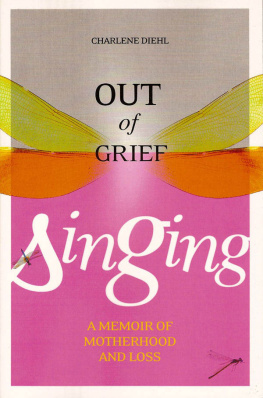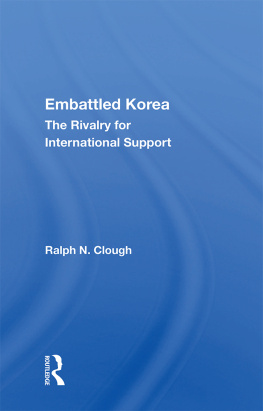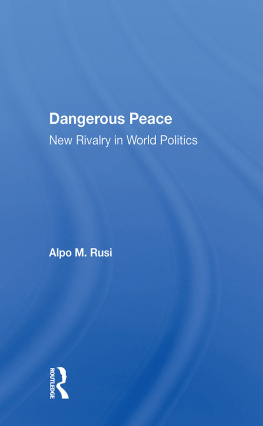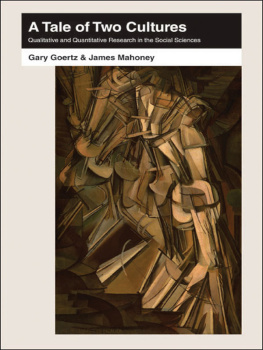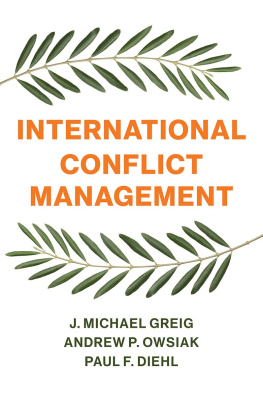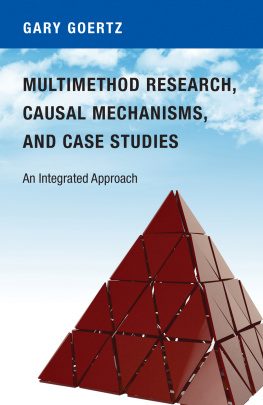Paul F. Diehl and Gary Goertz - War and Peace in International Rivalry
Here you can read online Paul F. Diehl and Gary Goertz - War and Peace in International Rivalry full text of the book (entire story) in english for free. Download pdf and epub, get meaning, cover and reviews about this ebook. publisher: The University of Michigan Press, genre: Politics. Description of the work, (preface) as well as reviews are available. Best literature library LitArk.com created for fans of good reading and offers a wide selection of genres:
Romance novel
Science fiction
Adventure
Detective
Science
History
Home and family
Prose
Art
Politics
Computer
Non-fiction
Religion
Business
Children
Humor
Choose a favorite category and find really read worthwhile books. Enjoy immersion in the world of imagination, feel the emotions of the characters or learn something new for yourself, make an fascinating discovery.

- Book:War and Peace in International Rivalry
- Author:
- Publisher:The University of Michigan Press
- Genre:
- Rating:3 / 5
- Favourites:Add to favourites
- Your mark:
- 60
- 1
- 2
- 3
- 4
- 5
War and Peace in International Rivalry: summary, description and annotation
We offer to read an annotation, description, summary or preface (depends on what the author of the book "War and Peace in International Rivalry" wrote himself). If you haven't found the necessary information about the book — write in the comments, we will try to find it.
War and Peace in International Rivalry — read online for free the complete book (whole text) full work
Below is the text of the book, divided by pages. System saving the place of the last page read, allows you to conveniently read the book "War and Peace in International Rivalry" online for free, without having to search again every time where you left off. Put a bookmark, and you can go to the page where you finished reading at any time.
Font size:
Interval:
Bookmark:
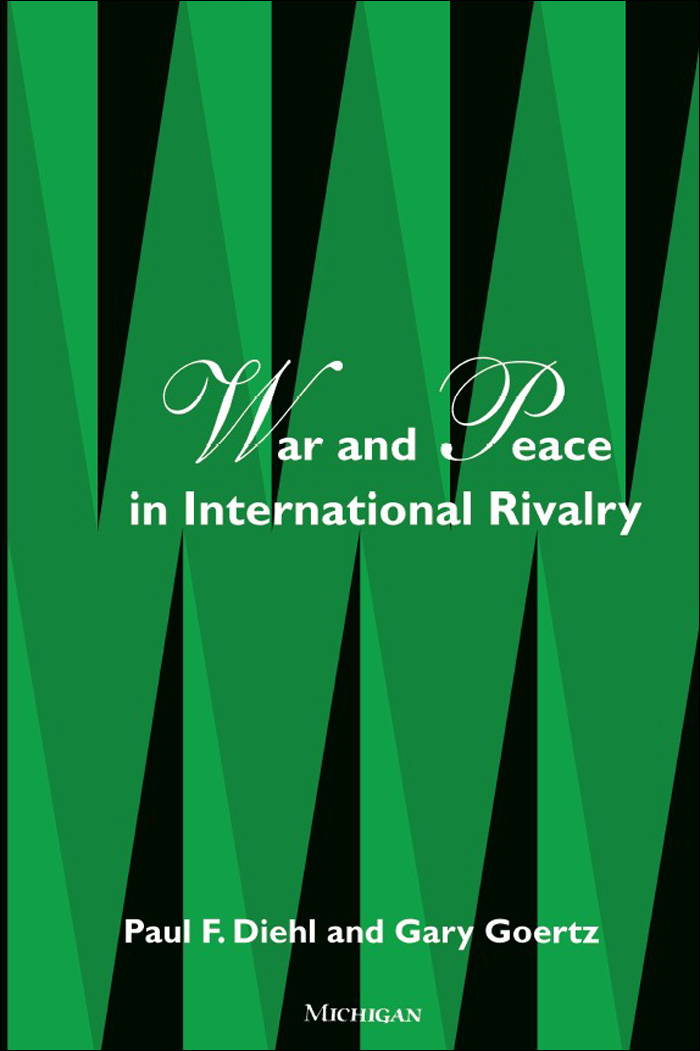
War and Peace in International Rivalry
Paul F. Diehl and Gary Goertz
Ann Arbor
THE UNIVERSITT OF MICHIGAN PRESS
First paperback edition 2001
Copyright by the University of Michigan 2000
All rights reserved
Published in the United States of America by The University of Michigan Press
Manufactured in the United States of America
 Printed on acid-free paper
Printed on acid-free paper
2004 2003 2002 2001 5 4 3 2
No part of this publication may be reproduced, stored in a retrieval system, or transmitted in any form or by any means, electronic, mechanical, or otherwise, without the written permission of the publisher.
A CIP catalog record for this book is available from the British Library.
Library of Congress Cataloging-in-Publication Data
Diehl, Paul F. (Paul Francis)
War and peace in international rivalry / Paul F. Diehl and Gary Goertz.
p. cm.
Includes bibliographical references and index.
ISBN 0-472-11127-2 (alk. paper)
1. International relations. 2. Balance of power. 3. War. 4. Peace. I. Goertz, Gary, 1953 II. Title.
JZ1313 .D54 2000
327.1dc21
99-462011
ISBN 0-472-08848-3 (pbk. : alk. paper)
ISBN13 978-0-472-08848-5 (paper)
ISBN13 978-0-472-02691-3 (electronic)
.
We have received significant support from a number of programs and institutions in completing this manuscript. We would like to express our deep appreciation to all of them. The National Science Foundation (grant no. SES-9309840) provided much of the early support for our work on enduring rivalries. Essential research assistance was facilitated by grants from the University of Illinois Research Board. Release time for Paul Diehl to draft much of this book was graciously given by a sabbatical from the University of Illinois Board of Trustees and a fellowship from the University of Illinois Center for Advanced Study. Gary Goertz would like to thank the Department of Political Science at the University of Toronto for providing him time to work on this project by not inviting him to one committee meeting during his years there. He extends special thanks to the late Professor Paul Bairoch whose Institute for International Economic History at the University of Geneva provided a genial home and support during the beginning and end years of this research project.
Various individuals offered useful comments on the different chapters of this book, including preliminary versions that appeared as conference papers and journal articles. We are especially grateful to Paul Hensel, Scott Bennett, William Thompson, Nils Petter Gleditsch, and Manus Midlarsky in this regard. Some of the chapters here include material from collaborations with other scholars. Thus, we are thankful for the important roles that Paul Hensel played in the research in . Data for the analyses in this book were provided by the Correlates of War Project, with special thanks going to J. David Singer and Stuart Bremer, and by Jacob Bercovitch and his project on international mediation. Finally, we are grateful for Jaroslav Tirs assistance in editing and index preparation.
Since its origins, the study of international relations has centered on the analysis of war. This analysis has taken on various forms: Small and Singer (1982) and Bueno de Mesquita (1981) examined all wars since 1816, Jervis (1976) chose wars that related to his specific purposes, Van Evera (1984) examined the causes of World War I, and Lebow (1981) analyzed 13 crises, many of which ended in war. In spite of their ideological and methodological differences, war as the phenomenon to be explained unites these diverse scholars.
In contrast, we suggest in this volume that one can learn much about war by taking a step back and focusing attention on militarized relationships, what we refer to as rivalries. We argue that examining war only is like trying to understand a problem marriage by looking only at when a husband beats his wife. Understanding such a marriage requires understanding the kind of relationship in which violence is possible. Wars do not suddenly occur between two states, but rather almost always arise in situations in which the two countries have had serious conflicts and have been using the military instruments of foreign policy against one another. Only recently have students of war become conscious of what they already intuitively knew: a large portion of wars occur in long-term enduring rivalry relationships (see ).
Jervis, Singer and Small, Bueno de Mesquita, Lebow, Van Evera, and other scholars want to understand the causes of war. In contrast, we examine the causes and consequences of rivalry. For us, war is potentially both a cause and an effect of rivalry. War occurs within rivalry because both parties are managing their conflicts with military tools. Yet, at the same time, war can establish the relationship as militarized. For example, the Korean War initiated a militarized rivalry between the United States and China that lasted until a rapprochement between the states in the 1970s. This book explores somecertainly not allof the implications that this fundamental shift in perspective from war to rivalry has for the study of international conflict.
, for example, we use rivalries to test aspects of democracy that do not fit into standard methodologies, as we can look at regime changes within rivalries (interrupted time-series) as well as compare patterns of democracy and war across rivalries. The former escapes completely the cross-sectional methodologies that dominate the analysis of democratic peace, while the later uses a different unit of analysis, the rivalry.
The empirical dimension of the rivalry approach focuses on phenomena ignored by standard conflict theories. The second part of the book focuses on one such phenomenonenduring rivalries. One characteristic of a useful theoretical framework is that it points out new phenomena that merit theoretical and empirical attention. The rivalry approach stresses the interconnectedness and the temporal duration of military rivalries. It brings into the limelight the existence of the phenomenon of enduring rivalries and at the same time calls out for a theoretical explanation. Scholars and policymakers are aware of long-term rivalries, but given the cross-sectional bias of most qualitative and quantitative conflict research, this knowledge rarely produces studies, models, and theories of enduring rivalries.
The existence of enduring rivalries cries out for theoretical and empirical treatment. of this volume is our response. We argue that a central characteristic of enduring rivalries is their stability. Traditional balance-of-power or deterrence theories usually contrast stability (i.e., the absence of war) with instability, signified by crises and wars. Our model of enduring rivalry turns this standard view on its head. What we call the punctuated equilibrium model of enduring rivalries (see below) stresses the stability or continuity of these military conflicts. Instability in the form of political shocks (i.e., world wars, civil wars, regime shifts) is associated with the initiation and termination of rivalries. Hence, instead of instability being associated with war and crisisessentially its negative connotationwe propose that it is also associated with peace and conflict termination. Wars and regime changes are shocks that upset the stability of enduring rivalries, setting the stage for a qualitative change in the relationship between would-be or actual rivals.
Font size:
Interval:
Bookmark:
Similar books «War and Peace in International Rivalry»
Look at similar books to War and Peace in International Rivalry. We have selected literature similar in name and meaning in the hope of providing readers with more options to find new, interesting, not yet read works.
Discussion, reviews of the book War and Peace in International Rivalry and just readers' own opinions. Leave your comments, write what you think about the work, its meaning or the main characters. Specify what exactly you liked and what you didn't like, and why you think so.

